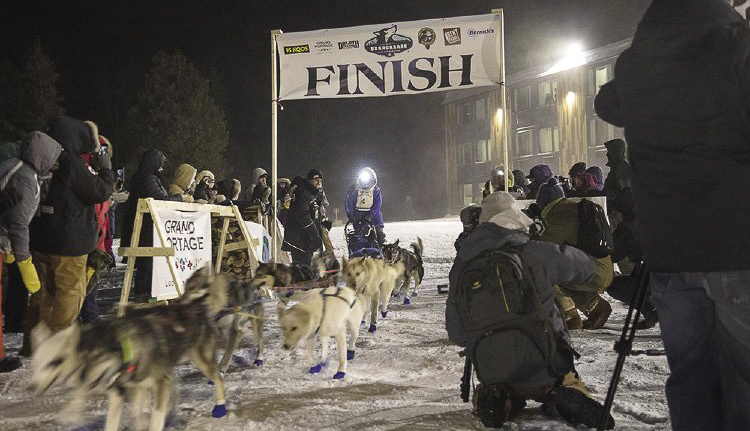Minnesota’s great race, the John Beargrease Sled Dog Marathon, is set to begin Jan. 24. The Beargrease is a time-honored tradition on the North Shore, and Beargrease spokesperson Monica Hendrickson and board of directors vice president Frank Moe shared a few new developments that will help launch the race into its next decade.
The Great Alaskan Race
In October 2019, the film The Great Alaskan Race debuted in theaters around the world. The film depicts the epic story of the 1925 serum run to Nome, a gruelling cross-Alaskan dog sled trip that delivered life-saving antitoxin to the children of Nome, Alaska. The film follows the story of Norwegian musher Leonhard Seppala and his lead dog, Togo, who were selected to complete the most hazardous portion of the nearly 700-mile relay. Seppala’s team covered 300 miles, or about five times the distance that most other mushers in the relay completed. (Seppala was also the owner of Balto, the sled dog famous for leading the final leg of the journey.)
Though Togo was an older dog, the bond he had with Seppala made him a true hero of the serum run.
“This narrative integrates with the history of the Beargrease beautifully. It’s so important to keep the history of John Beargrease alive, as he was a pioneer in his day delivering mail up and down the North Shore of Lake Superior,” said Hendrickson and Moe.
The film, which highlights the amazing feats that the human-and-canine relationship can achieve, is donating a portion of its proceeds to a handful of non-profit organizations, including the Beargrease Sled Dog Marathon. Writer and director Brian Presley said in a TV interview that they wanted the film to benefit sled dogs and mushing, and chose six nonprofits, including the Beargrease, that were working to achieve those goals. Other nonprofits that The Great Alaskan Race will support include the Iditarod; Battle Dawgs, which connects veterans with PTSD with Alaskan sled dog experiences; and Deity Animal Rescue, a Los Angeles-based nonprofit that helps rescues dogs from high-kill shelters. (In warmer regions of the U.S., huskies make up a high proportion of dogs surrendered to shelters—Presley has said that they are working with Deity, the Iditarod, and the Beargrease to get huskies out of southern shelters and into northern regions where they can thrive.)
While the film is out of theaters now, interested viewers can purchase the film on DVD or stream it online to learn more about the 1925 serum run and help support the Beargrease Marathon.
_____________

